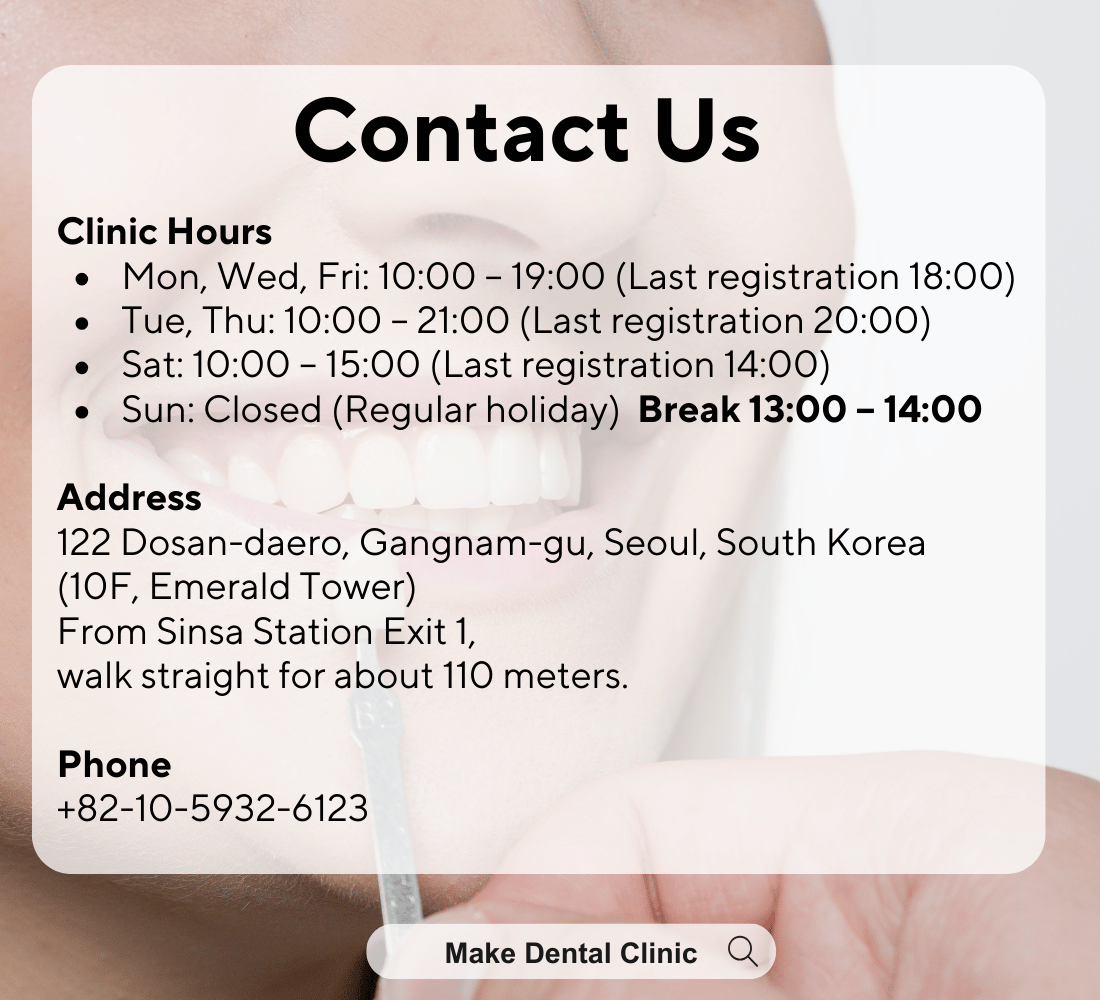Laminate Veneers Side Effects in Korea
Laminate Veneers Side Effects in Korea
Laminate veneers are one of the most popular cosmetic dental treatments in Korea, known for delivering a bright, symmetrical, and natural-looking smile with minimal downtime. While laminate veneers are generally safe and widely used, patients should understand the possible side effects before committing to treatment.
Below is a complete guide to the short-term and long-term side effects of laminate veneers in Korea.
1. Tooth Sensitivity
One of the most common side effects is increased sensitivity to:
- Cold drinks
- Hot foods
- Air exposure
- Sweets
Because a thin layer of enamel is removed during preparation, teeth can feel more sensitive for several days or weeks. In most cases, sensitivity gradually improves as the tooth adjusts.
2. Gum Irritation or Inflammation
After veneers are placed, the gums may feel:
- Sore
- Swollen
- Tender
- Slightly irritated
This usually occurs because the gumline is adjusting to the new shape and thickness of the veneers. Proper cleaning and gentle care help the gums recover quickly.
3. Enamel Removal (Permanent)
Laminate veneers require enamel shaving — even if minimal.
This leads to:
- Permanent loss of natural enamel
- Irreversibility of the procedure
- Long-term reliance on veneers or crowns
Once enamel is removed, it cannot grow back, so veneers become a lifelong commitment.
4. Bite Discomfort or High Spots
If veneers are not shaped perfectly, you may feel:
- Clicking when biting
- Pressure on certain teeth
- Jaw discomfort
- Uneven chewing
Minor adjustments usually resolve these issues, but bite alignment must be checked carefully after placement.
5. Increased Risk of Chips or Cracks
Although laminate veneers are strong, they are still thin shells. They may chip or crack if you:
- Bite hard foods (ice, nuts, bones)
- Grind or clench your teeth
- Use teeth as tools (opening packages)
Patients prone to bruxism often require a night guard to protect their veneers.
6. Color Mismatch Over Time
Veneers themselves do not stain easily, but the natural teeth and gums around them can.
This may cause:
- Visible edges
- Dark lines near the gum
- Slight mismatch in shade with time
Regular dental cleaning helps keep the area looking harmonious.
7. Temporary Speech Changes
Some patients notice:
- Lisping
- Slight difficulty pronouncing “s” or “t”
- Feeling like teeth are “too big”
This typically resolves within a few days as the tongue adapts to the new shape of the front teeth.
8. Veneer Detachment or Loosening
In rare cases, a veneer may:
- Become loose
- Pop off
- Require re-bonding
This can happen due to bonding issues, aggressive chewing, or trauma. Repairs are usually straightforward.
9. Gum Recession (Long-Term)
Over many years, gums may naturally recede, exposing the veneer margins.
This can result in:
- Visible lines
- Sensitivity
- Need for veneer replacement
Good oral hygiene helps slow down recession.
10. Long-Term Maintenance Requirements
Laminate veneers last 7–15 years on average, depending on care. Side effects of long-term wear include:
- Need for replacement or refinishing
- Possible discoloration of the underlying tooth
- Occasional bonding failure
- Wear and tear from chewing or grinding
Regular checkups are essential to maintain the beauty and structure of the veneers.
⭐ Are Laminate Veneers Safe in Korea?
Yes — Korea is known for advanced veneer systems, high-quality ceramics, precise digital scanning, and skilled cosmetic dentists.
However, like any dental treatment, veneer success depends on:
- Correct diagnosis
- Proper preparation
- Natural design
- Skilled bonding technique
- Good aftercare
Final Thoughts
Laminate veneers can dramatically enhance your smile, but it’s important to understand the potential side effects and long-term responsibilities. Korean veneer treatments are highly trusted, but patients should make informed decisions and follow proper aftercare for the best results.



